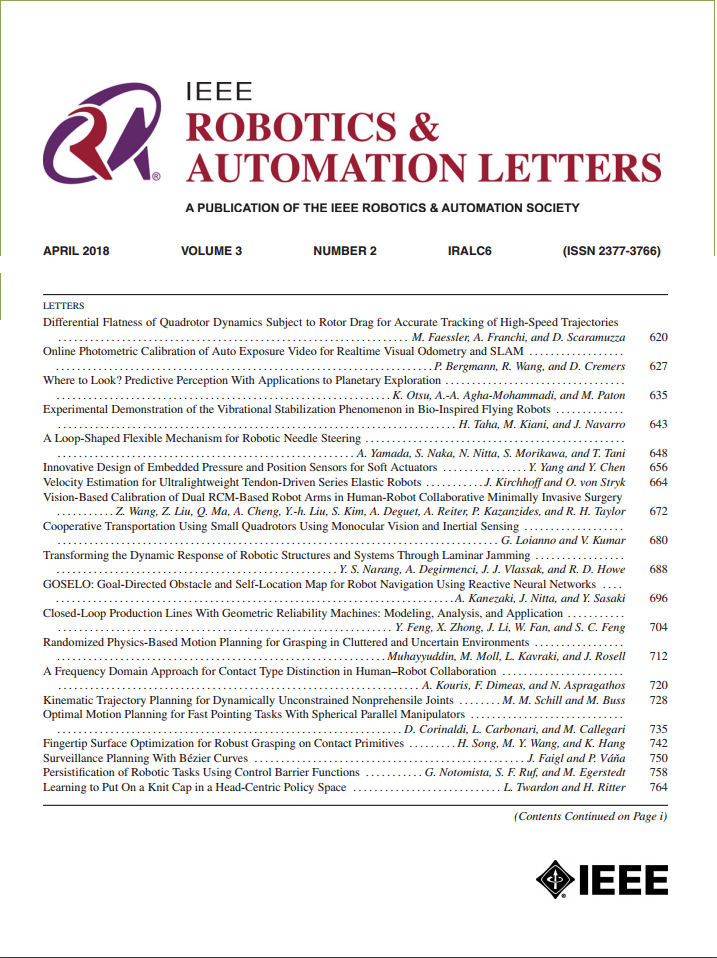基于微型飞行时间传感器的机器人机械手附近目标的高效检测
IF 5.3
2区 计算机科学
Q2 ROBOTICS
引用次数: 0
摘要
我们提供了一种方法来检测和定位物体附近的机器人手臂使用手臂安装微型飞行时间传感器。在使用臂式传感器时,一个关键的挑战是在传感器测量中区分机器人本身和外部物体。为了解决这一挑战,我们提出了一种计算轻量级的方法,该方法利用许多现成的低分辨率飞行时间传感器捕获的原始飞行时间信息。我们建立了机器人单独存在时期望传感器测量的经验模型,并在运行时使用该模型来检测机器人附近的物体。除了在常见的传感器配置中避免机器人自我检测之外,所提出的方法还使传感器的放置具有额外的灵活性,解锁配置可以更有效地覆盖机器人手臂周围的半径。我们的方法可以检测到手臂附近的小物体,并以合理的精度定位物体沿机器人连杆长度的位置。我们根据对象类型、位置和环境光照水平评估了该方法的性能,并确定了测量原理中固有的性能限制因素。该方法在避免碰撞和促进人机安全交互方面具有潜在的应用前景。本文章由计算机程序翻译,如有差异,请以英文原文为准。
Efficient Detection of Objects Near a Robot Manipulator via Miniature Time-of-Flight Sensors
We provide a method for detecting and localizing objects near a robot arm using arm-mounted miniature time-of-flight sensors. A key challenge when using arm-mounted sensors is differentiating between the robot itself and external objects in sensor measurements. To address this challenge, we propose a computationally lightweight method which utilizes the raw time-of-flight information captured by many off-the-shelf, low-resolution time-of-flight sensor. We build an empirical model of expected sensor measurements in the presence of the robot alone, and use this model at runtime to detect objects in proximity to the robot. In addition to avoiding robot self-detections in common sensor configurations, the proposed method enables extra flexibility in sensor placement, unlocking configurations which achieve more efficient coverage of a radius around the robot arm. Our method can detect small objects near the arm and localize the position of objects along the length of a robot link to reasonable precision. We evaluate the performance of the method with respect to object type, location, and ambient light level, and identify limiting factors on performance inherent in the measurement principle. The proposed method has potential applications in collision avoidance and in facilitating safe human-robot interaction.
求助全文
通过发布文献求助,成功后即可免费获取论文全文。
去求助
来源期刊

IEEE Robotics and Automation Letters
Computer Science-Computer Science Applications
CiteScore
9.60
自引率
15.40%
发文量
1428
期刊介绍:
The scope of this journal is to publish peer-reviewed articles that provide a timely and concise account of innovative research ideas and application results, reporting significant theoretical findings and application case studies in areas of robotics and automation.
 求助内容:
求助内容: 应助结果提醒方式:
应助结果提醒方式:


